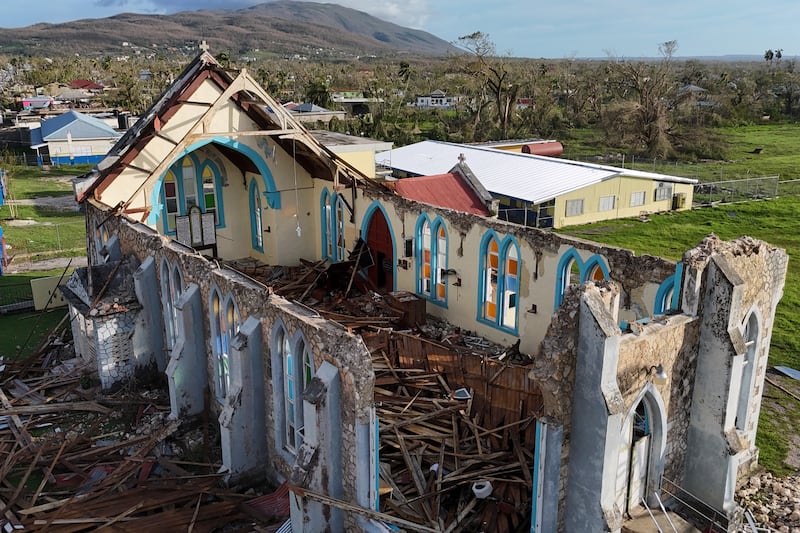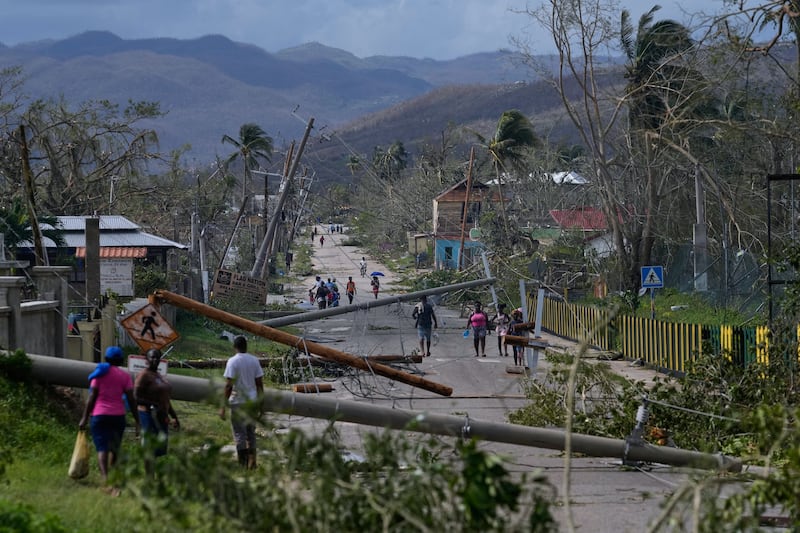MONTEGO BAY, Jamaica — Northwestern Jamaica’s St. James parish felt Hurricane Melissa’s destructive force. In rural areas -- where there was a shortage of drinking water on Thursday -- damaged fishing boats were in random places, and some roads were still blocked.
Law enforcement blocked the entrance to the Sangster International Airport, east of Montego Bay, where some tourists were eager to go back home. The airport opened to receive foreign disaster relief, but it remained closed to commercial passengers.
Lancelot Radcliffe, who has family in South Florida, was in tears. He recalled how he and his sister were crying and hugging each other after walking through flood waters to be reunited after the storm. He said his house smelled like sewage because of the mud, fish, and crabs.
“It’s really bad,” Radcliffe said. “America, Jamaica needs you guys. They need help down here, please. See what you can do to help these people here because Jamaica is really destroyed.”
Radcliffe said he was eager for the airport to reopen, so he could fly to his home in Philadelphia, while a contractor repairs his damaged home in Jamaica. Some chose to stay and wait outside the airport. Others left with plans to return.
JAMAICAN OFFICIALS’ UPDATE
Daryl Vaz, Jamaica’s transportation minister, said the Ian Fleming International Airport, in the northeastern town of Boscobel, and the Norman Manley International Airport in Kingston had reopened to commercial passenger flights.
“Our immediate focus is on reopening main routes, especially those leading to hospitals and critical facilities, while addressing public health and waste management concerns,” Jamaican Prime Minister Andrew Holness wrote on Thursday morning on X.
Desmond McKenzie, the minister of local government, said there were 521 shelters in operation with about 13,000 people. He said six parishes were impacted: Manchester, St. Elizabeth, Trelawny, Hanover, Westmoreland, and St. James.
“Over 170 communities within these parishes have been moderately or severely affected,” McKenzie said.
Holness referred to southwestern Jamaica’s coastal town of Black River, in the St. Elizabeth parish, as “ground zero.” McKenzie said there was food and water on the way for Black River Mayor Richard Solomon.
Dana Morris Dixon, Jamaica’s education minister, said the Jamaica Defence Force has been helping to move patients out of Black River Hospital and using a helicopter to help recover bodies.
“There are many people who are trying to reach their loved ones and they are not getting through, so it’s a priority for us to get some more avenues for telecommunication,” Morris Dixon said.
Matthew Samuda, the minister of water, said pipes were washed away in northwest Jamaica, and a temporary connection should be up by Sunday evening, and the work should be finished in about six weeks. He said the damage assessment was still ongoing in St. Elizabeth parish.
Edmund Bartlett, the tourism minister, said the goal is to have the tourism industry “fully back” in operation by Dec. 15.
INTERACTIVE MAP
More on hurricane coverage
- Jamaican man in Montego Bay after Hurricane Melissa: ‘America, Jamaica needs you guys’
- Sangster International Airport in Montego Bay remains closed to commercial flights, open for Hurricane Melissa relief
- Videos show Hurricane Melissa’s path of destruction in Jamaica, Cuba, Bahamas
- Flights slowly resume between South Florida, Jamaica
- Miramar, home to large Jamaican community, steps up to help island after Hurricane Melissa
- How to help Jamaicans from South Florida
- Weather Authority: Hurricane specialist and storm surge expert’s report
Photos of the damage


Copyright 2025 by WPLG Local10.com - All rights reserved.

